Social Synchrony: Strengthening Social Bonds at Home, Work and Community
Social minds arise from social bonds. Our social minds work best when they are “in tune” with others. The benefits of social synchrony are many.
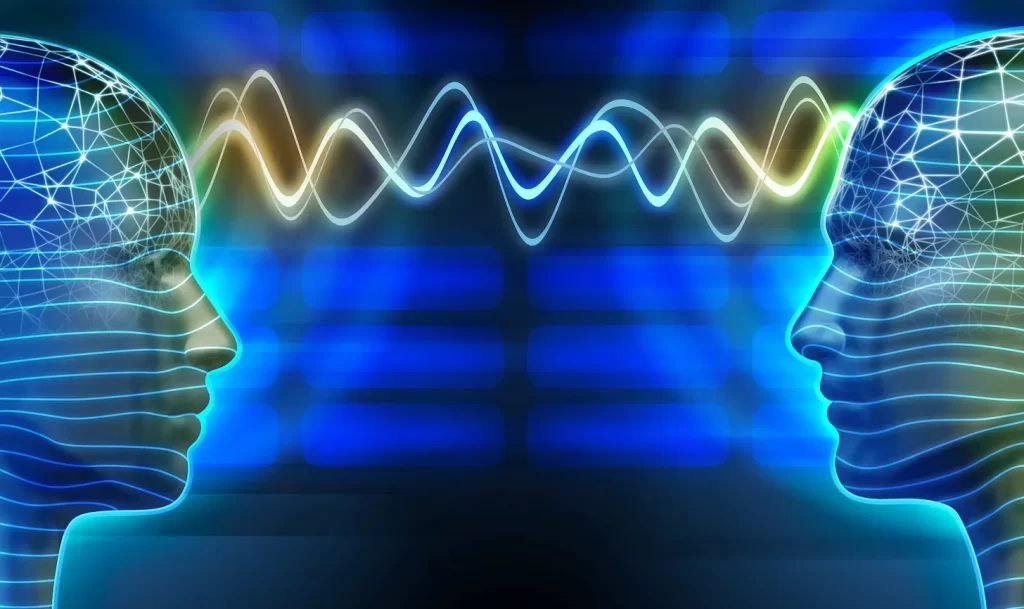
Have you ever had the experience of meeting a best friend after losing touch for several years? You get together over lunch or some activity, and the talk flows between you non-stop, as if you had never been separated.
Or perhaps you’ve experienced the joy of joining a project team that clicks. After a brief period of getting to know one another, you “put your heads together” like a well-oiled machine, moving smoothly and quickly. The feeling that comes from being part of such a team is unparalleled.
As humans, we are inherently social creatures. Some of us are more drawn to group membership than others, but it’s a part of our nature that we can’t escape. Our first taste of group dynamics comes from our families. We expand our social world through schooling. As adults, we form friendships, find partners, and work collaboratively. Whether in small or large numbers, our interactions with others are an inescapable part of life.
Creating bonds with others is important for rewarding social relationships. But how does social bonding occur? By chance? Instant karma? Or by some gradual process that builds over time?
When Individual Minds Become Social Minds
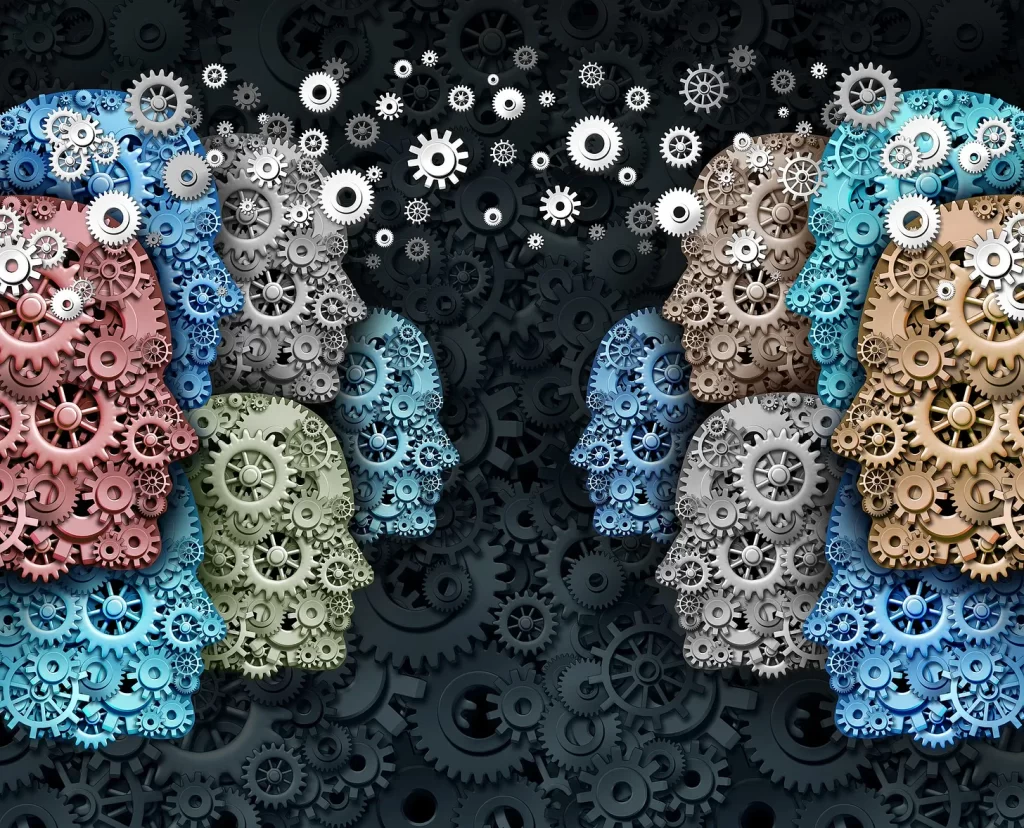
As we lead our daily lives, we think of ourselves as individuals. We have our own thoughts and make our own decisions. This is especially true of those of us who live in Western cultures, where individualism is perceived as a birthright. As such, our individual minds are the keepers of our values and beliefs.
Because of our individual-centric orientation, we are unaware of our social minds that allow us to perceive, interpret, and understand social information and interactions.
How do you know when your social mind is active? Ask yourself these questions:
- Has a social media influencer persuaded you to buy the same merchandise bought by your friends?
- How about attending a sporting event and singing the national anthem before the game?
- When attending a religious service, do you automatically begin to join the congregation in reciting the customary prayers?
- When immersed in a project team with fellow workers, do you experience solving problems as a group rather than as an individual?
With an individual mind, you live in a private world of your own thoughts and aspirations. With a social mind, you live in a world of knowledge, expectations, and routines shared among those in your network, whether family, work, friends, or other groups.
Aligning Social Minds
Being with others can be rewarding or punishing. You go out with friends for an evening of fun and end up fighting. Members of a project team disagree and miss a product deadline. Parents and adolescents may have a major argument about social media screen time. Sharing social minds can be an experience of harmony or discord.
Until recently, we had only “macro-level” psycho-social theories to explain the dynamics of how social relations become harmonious or discordant. Today, we can understand these dynamics at the “micro-level” of the human brain.
For the past several years, neuroscientists have been developing methods for measuring brain activity in real-time among people in a relationship. When two or more people share an activity, researchers have learned that their brains align through a process called inter-brain synchrony. This process is known by other names, such as neural coupling or brain-to-brain synchrony. I will refer to this neuro-dynamic as social synchrony: the brains of two humans becoming synchronized through shared activities. However, all of these descriptive terms are equivalent.
The “head-line news” from this research is that the greater the social synchrony, the greater the benefit of two or more minds working together. Conversely, the lack of synchrony leads to disharmony and a lack of productivity. The best news is that a state of social synchrony between two or more people is a strength that can be developed.
Brains Can Synchronize? Who Knew?
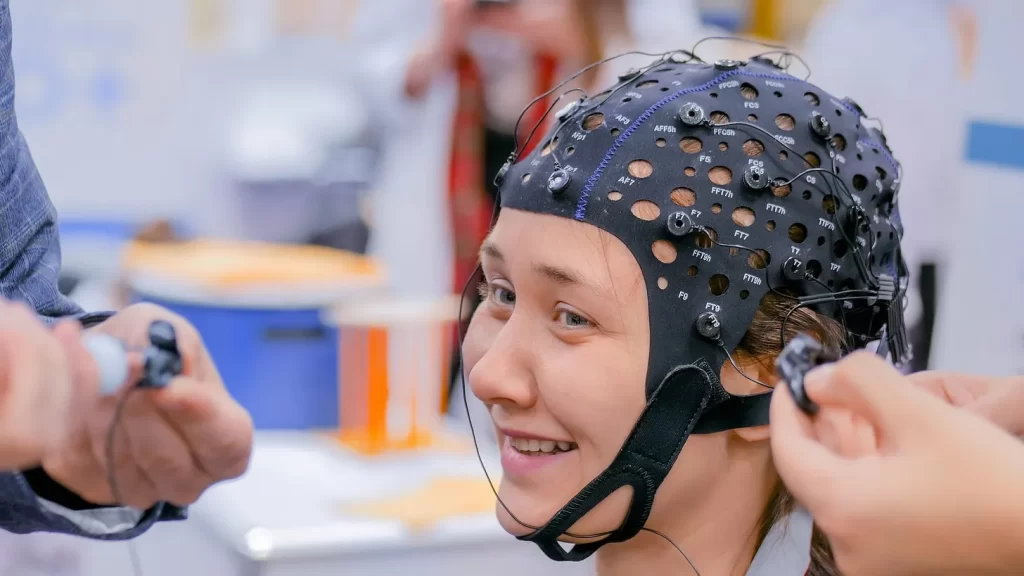
What is brain-to-brain (social) synchrony, and how does it work? The answer lies in the ability of your brain’s nerve cells and waves to become physically aligned with another person’s brain.
Your brain is composed of elongated cells called neurons, which send information through a network of connections. Each neuron is connected to several thousand others. These billions of neurons and trillions of connections process the information that fuels the “you that is you.”
Neurons communicate through chemical signals that are passed from one to the other. Each signal (and there are billions of them) creates a tiny electrical field with each “firing” of the nerve cells. The sum total of these electrical fields creates brain waves. Like the radio waves that AM/FM radios receive, brain waves oscillate in different frequencies.
These oscillating electrical fields radiate outside your head and can be measured by various devices, such as an electroencephalogram (EEG) machine (see photo above). When two or more people wear a brain cap and engage in coordinated activities (called hyperscanning), researchers can record the simultaneous radiation of the participant’s brain waves to compare inter-brain alignment or misalignment.
As you will see, two people do not have to be near one another to experience brain-to-brain coupling. The synchrony is mediated by two or more people observing each other’s actions and engaging in shared activities.
Brain Waves
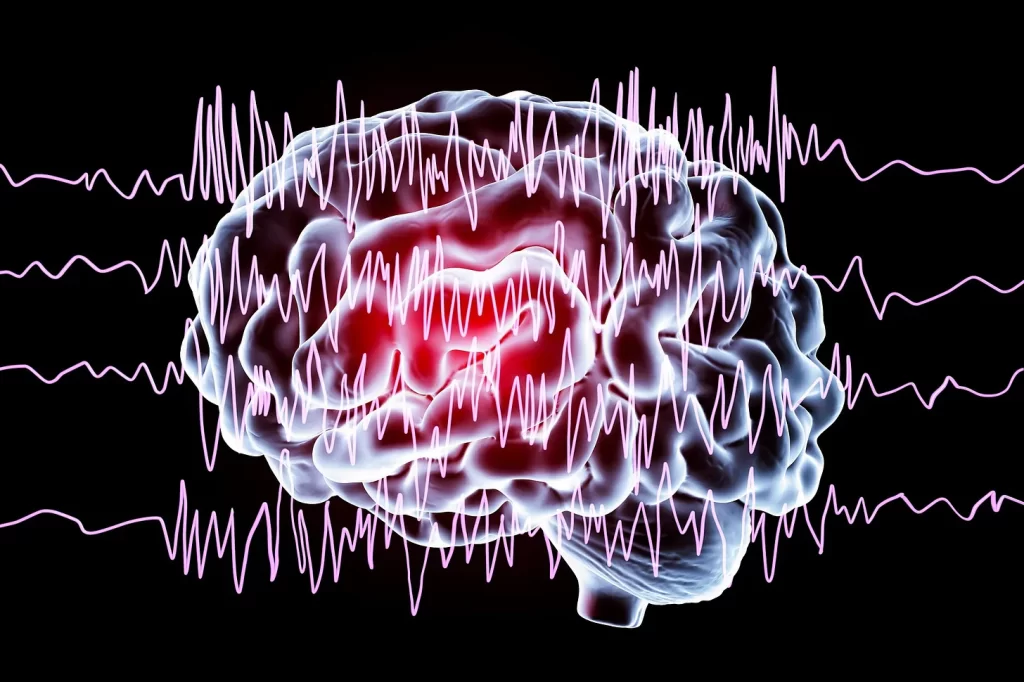
All humans have similar brain wave patterns oscillating within specified frequency ranges. These different brain wave patterns are associated with different brain states. Here are the brain wave types and the wave frequency ranges:
- Delta Waves: (0.5 to 4 Hz) Most prominent during deep sleep and in young children. Associated with healing, restorative sleep, and unconscious body functions, such as regulating the heartbeat and digestion.
- Theta Waves: (4 to 8 Hz) Commonly observed during light sleep, deep relaxation, and meditation. In waking states, associated with creativity, intuition, daydreaming, and memory.
- Alpha Waves: (8 to 12 Hz) Linked with states of relaxation while awake, such as during light meditation, calmness, and while closing the eyes. Can serve as a bridge between conscious thought and a meditative state.
- Beta Waves: (12 to 30 Hz) Prominent during waking when the brain engages in problem-solving, decision-making, focused mental activity, and active conversation. Associated with alertness, but can also be linked to anxiety, stress, and restlessness.
- Gamma Waves: (30+ Hz) Associated with high-level cognitive functioning, information processing, consciousness, and spiritual experience. Important in learning, memory consolidation, and processing of stimuli.
When two or more people demonstrate inter-brain synchrony, one or more of their brain wave patterns are identical. Dissimilar brain wave patterns indicate that two or more people are out of sync.
The Evidence is Solid: Social Synchrony Leads to Shared Goal Achievement
Many research studies conducted over the past several years have demonstrated that when two or more people are in a shared state of social (brain-to-brain) synchrony, the experience is better for all, and productivity increases. I have summarized a few of the many research studies demonstrating positive social synchrony outcomes.
Mothers and Children: Developing a strong attachment to caregivers is crucial in early childhood, serving as a model for future relationships. One study involving 42 mother-child pairs showed that their brain activity synced more during cooperative problem-solving tasks than when working alone or resting. This interaction was key to enhancing neural synchrony.
Mothers, Fathers, and Children: Another study compared neural synchrony in interactions involving mothers compared to fathers with their children. It found mothers generally had greater neural and behavioral synchrony, particularly during shared activities, as they tend to be more active with and supportive of their children. Fathers engaged their children in more stimulating and exploratory activities. Overall, though, fathers were less engaged and more distracted. For both mothers and fathers, neural synchrony decreased under stress and when managing difficult child behaviors.
Psychotherapy: Brain-to-brain synchrony shows that our brains are “plastic,” meaning that our brain’s neuronal segments can be modified to align neural firing patterns (and associated brain waves) between two or more people in social synchrony. This alignment has been shown to occur during psychotherapy sessions. In one study, high levels of synchrony were shown to be associated with a strong working alliance between patients and therapists, resulting in improved treatment outcomes.
Video Gaming: Social synchrony can occur even though two or more people are separated geographically. A study showed that online cooperative games achieved brain-to-brain synchrony across alpha, beta, and gamma waves. This synchrony was linked to better performance during cooperative games.
Social Media: Another neural synchrony study shows that face-to-face interactions generate higher levels of social bonding than social media texting. Although texting has become a prevalent mode of social interaction, especially among youth, face-to-face interactions show stronger frontotemporal inter-links in both participants compared to texting. This area of the brain is involved in decision-making and emotional regulation. In adolescents, the frontotemporal region is not fully developed, which can lead to risk-taking behaviors. Face-to-face social relations that favor the frontotemporal region of the adolescent brain can contribute to more mature relationships than texting.
Pop Music Concerts: When people watch live music together, their delta brain waves become more synchronized than those watching a recording or in smaller groups. This synchronization is linked to the beat of the music and is associated with attendees feeling more connected to the performers and enjoying the show more. The performers also experience the close bond established by playing together.
Houses of Worship: Religious services often involve singing, chanting, or praying together. These synchronized activities promote social bonding and brain-to-brain synchrony among worshipers. The greater the ritualistic participation, the stronger the sense of community among worshipers.
Group Sports and Physical Activities: Participating in group sports or physical activities where team coordination and timing are crucial can also lead to increased brain-to-brain synchrony among team members. The shared goals and cooperative nature of these activities contribute to a sense of unity and can enhance team performance through improved synchrony.
Team Flow: A Social Synchrony With Bottom-Line Benefit
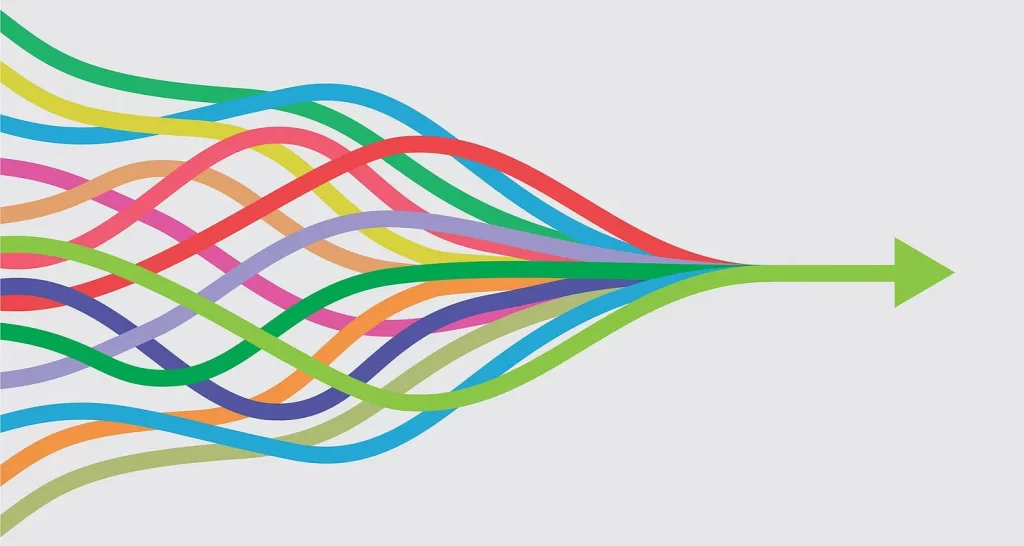
Teams with high social synchrony exhibit better performance, quicker problem-solving capabilities, and a stronger sense of unity. Managers should foster work environments that encourage such synchrony, significantly boosting team productivity, overall success, and bottom-line performance.
Team flow is the term used to describe an optimized team dynamic while executing projects requiring high degrees of interdependencies. Characteristics of team flow include collective ambition, a common goal, aligned personal goals, high-skill integration, open communication, safety, and mutual commitment.
One research team identified synchronized brain waves and neural patterns that were unique to high levels of team member cooperation. These alignment patterns were not observed when the pair was disrupted, or participants acted alone.
We conclude that (these neural patterns) of team flow induce a distinct brain state. Our results suggest a neurocognitive mechanism to create this unique experience.
Another research team found that higher levels of brain-to-brain synchrony were associated with teammates who identified more strongly with one another and cooperated more on an economic game. Players with high levels of brain-to-brain alignment outperformed the average individual on most problem-solving tasks.
Crucially, inter-mind-synchrony, but not self-reported group identification, predicted collective performance among teams.
Bottom-Line: Social Synchrony Promotes Health and Wellness
Positive social bonding that occurs through brain-to-brain synchrony results in a long list of health and wellness benefits for those who experience it. The studies documenting these benefits are many:
- Enhanced cooperation
- Increased empathy and social bonding
- Improved communication
- Prosocial behavior
- Stress reduction
Social Synchrony Can Be Developed — And Lost
When you share a strong social bond with others, you feel the glow of being together. This glow is brought to you courtesy of brain-to-brain synchrony, which I have called social synchrony. You can’t see or feel this bonding directly, but you get the secondary gain of the aligned brain state you share with your family, friends, or co-workers.
If you manage teams of people, you are probably interested in increasing social synchrony among members of your teams. Thankfully, this is not difficult.
Militaries worldwide and throughout history have long understood the importance of soldier-to-soldier synchrony, even if they did not understand the neurodynamics of brain-to-brain synchrony. Military leaders understand that soldiers in a unit need to think as one body. They need to recognize the authority of their unit leader and execute commands in lock-step with one another. The military achieves this synchronous unity through endless drills and marching.
All soldiers wear the same clothes, have similar haircuts, ritualistically address soldiers of higher rank, and eat together as a group. New military recruits soon lose their individual identity and develop a soldier identity. This begins with basic training and persists throughout their careers.
On a scale less than total immersion in a military unit, we see the utility of social bonding rituals in many settings where conformity is expected: schools, houses of worship, and youth social clubs. These shared environments lead to a shared social mind through which people have positive relationships with one another.
Studies of brain-to-brain synchrony have taught us that positive relationships grow over time through shared experiences and cooperative exchanges. This is not some imaginary or hypothetical state but is grounded in the biomechanics of our brains. Through neural alignments, the brains of those who bond together co-configure their neural circuity to promote complementary behaviors with one another.
The ongoing existence of these complimentary brain states is contingent on the cooperative activities that sustain the bonding. Experiments show that the brain-to-brain synchrony is lost when the positive bond fails. Social synchrony can also be lost due to stress or distraction.
On The Other Hand…
While social synchrony creates strong personal bonds, the process does not dictate the purpose of a group with strong synchrony. The close bonds experienced between members of terrorist groups or youth gangs can be explained by the same brain-to-brain dynamics that unite members of a religious congregation.
Final thoughts: Social Synchrony: Strengthening Social Bonds at Home, Work and Community
In this essay, I have focused on the positive benefits of social synchrony. However, this bonding dynamic has been shown to increase ideological partisanship, as some people are hyper-aligned with political messaging.
But that’s another topic for another essay. Watch this space!




